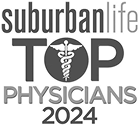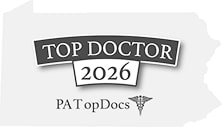Disc Herniations Treatment
Disc herniations occur when spinal discs bulge or rupture, pressing on nearby nerves and causing pain, numbness, or weakness. At Meeting Point Health, we focus on restoring disc health and reducing inflammation through regenerative therapies like PRP, Ozone, and Prolotherapy. Our goal is to relieve pressure, promote tissue repair, and help you return to pain-free movement—without surgery.
What Is A Herniated Disc?
A herniated disc occurs when the soft, gel-like material inside a spinal disc pushes through its tough outer layer. This process, referred to as “herniation,” can result in pressure on the nerves that run through the spinal column. While some herniated discs may not cause noticeable symptoms, others can lead to pain, numbness, or weakness in areas of the body connected to the affected nerve. Herniated discs are often the result of underlying medical conditions or wear and tear on the spine, making proper diagnosis and treatment essential for managing symptoms and preventing further complications.
What Causes A Herniated Disc?
- Age-Related Degeneration: Over time, spinal discs lose their flexibility and hydration, making them more prone to cracking or tearing under pressure. This natural wear and tear is often a primary cause in older adults.
- Repetitive Movements: Activities that involve repeated bending, lifting, or twisting can strain the spine and increase the risk of disc herniation.
- Heavy Lifting: Lifting heavy objects incorrectly—using your back instead of your legs—can put excessive pressure on the discs, leading to herniation.
- Injury or Trauma: Accidents, falls, or sudden impacts can damage the spinal discs and cause them to herniate.
- Poor Posture: Sitting, standing, or walking with poor alignment can place uneven stress on the spine, increasing the likelihood of disc damage over time.
- Obesity: Excess body weight puts additional strain on the spine, making it more vulnerable to herniation.
- Sedentary Lifestyle: Lack of regular exercise can weaken the muscles that support the spine, leaving it more susceptible to injury.
- Smoking: Smoking reduces blood flow to the spinal discs, impairing their ability to heal and increasing the risk of degeneration and herniation.
How To Diagnose A Herniated Disc?
At Meeting Point Health, Dr. Matta takes a comprehensive approach to diagnosing herniated discs. The process begins with a detailed clinical examination, including a thorough neurological assessment to evaluate muscle strength, reflexes, and nerve function. This helps pinpoint the affected area and assess the severity of the condition.
For confirmation, advanced imaging techniques are utilized. An MRI of the spine is the gold standard for detecting disc herniations, providing a clear view of the disc and surrounding structures to identify the exact location and extent of the herniation. Additionally, X-rays may be used to rule out other potential causes of your symptoms, such as fractures or structural abnormalities in the spine.
Herniated Disc Treatment Options in Philadelphia
These therapies for back pain focus on relieving discomfort and restoring mobility through various surgical alternative treatment options. Early intervention and a customized back pain treatment plan can lead to effective recovery and prevent future issues. Don’t let back pain hold you back! Contact Meeting Point Health today to schedule your personalized consultation and start your journey to relief. Your path to recovery begins here!
Prolotherapy
Prolotherapy therapy is a medical injection procedure whose goal is to relieve pain and promote healing of musculoskeletal conditions, especially involving ligaments, joints, and tendons. Prolotherapy stimulates healing, causes inflammatory responses that increase blood flow and the arrival of immune cells and growth factors to the injection area, and tissue repair.
PRP Therapy
Platelet-rich plasma PRP therapy is a medical treatment that involves the use of a patient’s own blood to promote healing and tissue regeneration. Once injected, the growth factors and other bioactive substances in PRP work to accelerate tissue repair, reduce inflammation, and promote the formation of new blood vessels. This helps in reducing pain, improving function, and enhancing the overall healing process.
Stem Cell Therapy
Stem cell injection therapy refers to a medical procedure in which stem cells are harvested from live, healthy birth tissue and then injected into a localized area on a patient’s body, typically to promote tissue repair, and regeneration, or to treat various medical conditions. Stem cells are unique because they can develop into different types of cells in the body, and they also have the capacity for self-renewal. This makes them valuable in medical treatments, as they can potentially replace or repair damaged or diseased tissues.
Prolozone
Prolozone therapy is a mixture of ozone gas and a prolotherapy solution is injected into the affected area, often around joints, ligaments, or tendons. The theory is that this combination not only irritates and strengthens the tissues (like prolotherapy) but also delivers the potential therapeutic benefits of ozone, such as improved circulation and tissue oxygenation. Prolozone combines procaine, dextrose, B vitamins, saline, oxygen, and ozone into a damaged joint and the combination allows for regrowth of damaged tissue.
Peptide Therapy
Peptide therapy is a cutting-edge, nonsurgical treatment for herniated discs that promotes healing by reducing inflammation, repairing damaged tissues, and supporting nerve health. Peptides like BPC-157 and Thymosin Beta-4 work by decreasing swelling around the herniated disc, stimulating collagen production for tissue repair, and enhancing the regeneration of compressed or damaged nerves. By improving blood flow and cellular healing, peptide therapy creates an optimal environment for recovery. At Meeting Point Health, Dr. Matta integrates peptide therapy into a comprehensive treatment plan to provide effective, long-lasting relief and help patients avoid surgery.
Osteopathic Manipulation
For most people, non-surgical treatment of a herniated disc is the best option. Treatment goals involve decreasing compression and inflammation around the nerve, thereby creating more space for the nerve to function properly. Hands-on treatment using osteopathic manipulation as well as medical acupuncture can help to decrease pain and improve function and improve blood flow to the spine.








